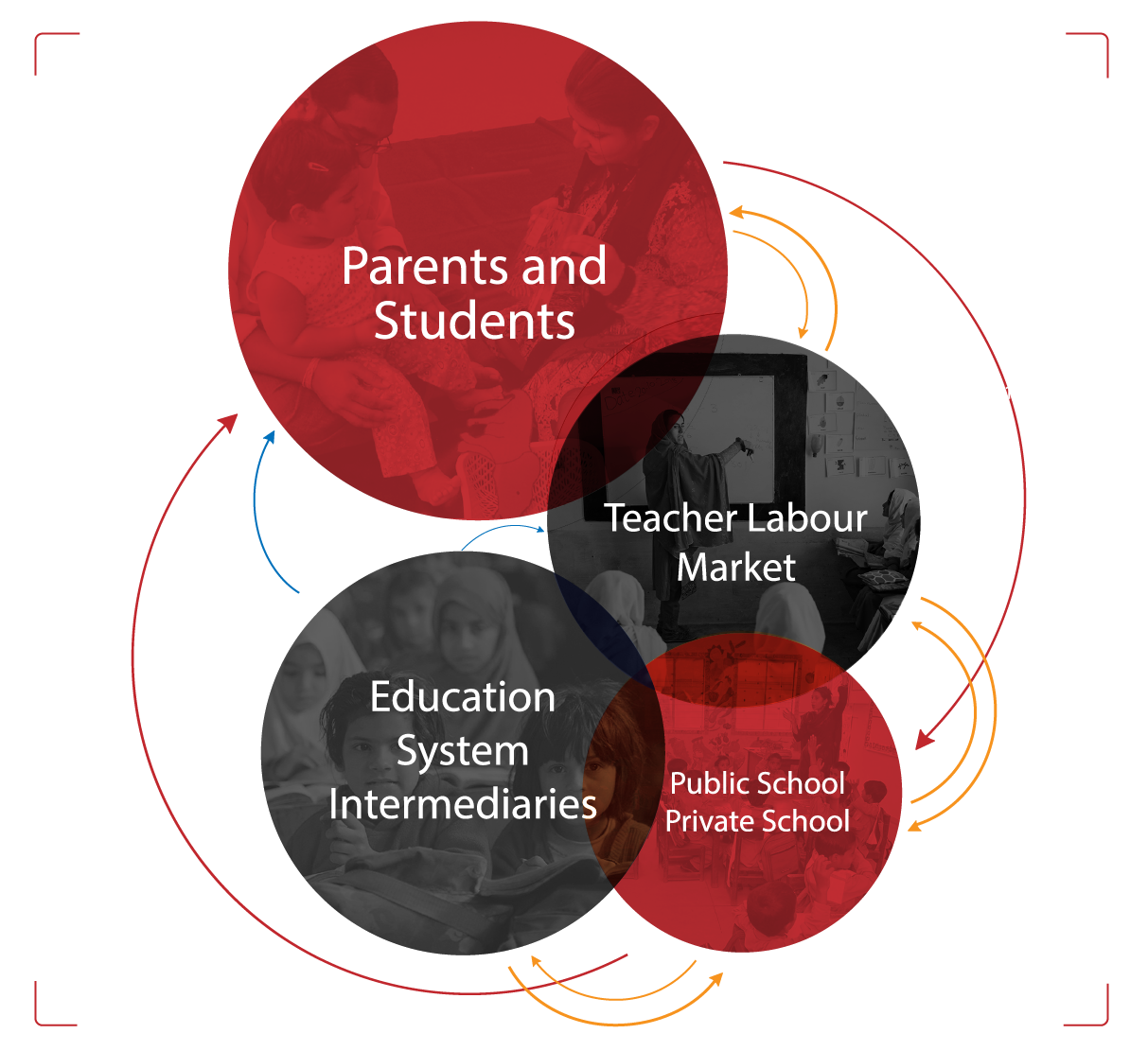
SYSTEMS THINKING APPROACH
A systems approach emphasizes that any education reform first needs to map the ecosystem of relevant educational actors, understand their role and objectives, and identify the exchange frictions these actors face in enabling system-wide educational quality improvements. These frictions can then be addressed through designing, evaluating, and refining educational interventions using theoretical insights and empirical research. The Pakistani case – with over 50 million K-12 learners – offers an interesting example for how to deploy a systems approach. The LEAPS portfolio showcases how this approach has been incredibly effective in raising educational quality in the country.
How it Works
1. Map the Ecosystem
Student learning is produced by a complex ecosystem of actors all working together. The first step in a systems approach is understanding what this ecosystem looks like: who are the key actors, how are they related, and what interactions do they need to have for the system to function?
2. Understand the Frictions
Once we have mapped the system, the next step is understanding what frictions prevent the various actors from effectively engaging effectively with each other. These systemic frictions - called “market failures” in economics - can prevent the system from producing effective learning.
3. Test Solutions
With a clear understanding of actors and their challenges, we can then design, evaluate, and refine interventions that aim to alleviate these frictions. While specific frictions and their solutions may be unique to each education ecosystem, this systems approach is highly transferable.
The Case of Pakistan
Click on the diagram for an example of ecosystem and frictions mapping from Pakistan







